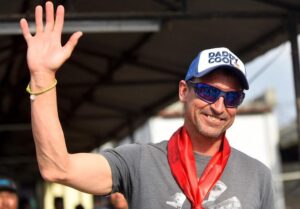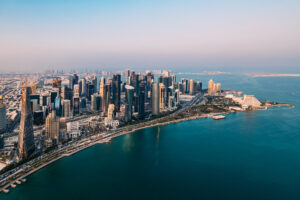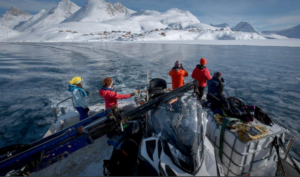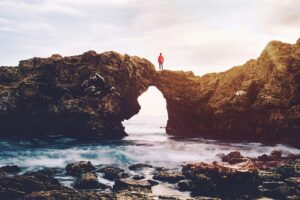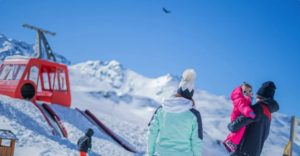Gateway to Annapurna : 24 hours in Pokhara
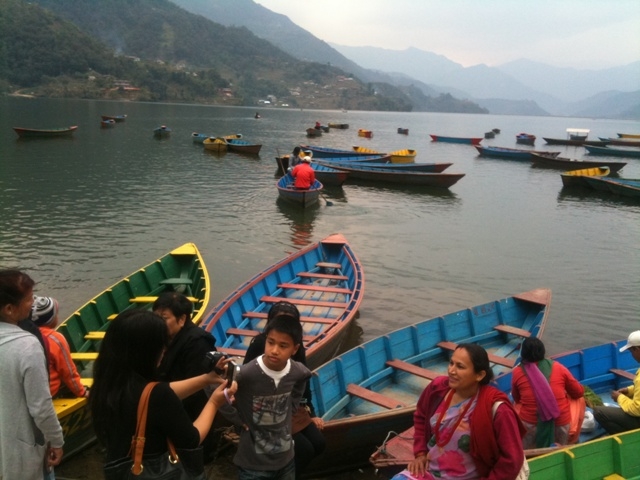
Louise Southerden joins the Tibetans and trekkers drawn to the Annapurna region’s ‘luminous’ lake city.
Second cities always have it tough. Yet Pokhara far outshines Kathmandu, the capital of Nepal. There’s its location, for one thing, on Nepal’s second-largest lake. As the gateway to the Annapurna trekking region, Pokhara’s surrounded by snowy peaks, including the 6997-metre Machhapuchhre, aka Fish Tail, one of the most recognisable mountains in the Himalayas. It’s also just 800 metres above sea level, which makes its climate unexpectedly subtropical.
Then there’s its other-worldliness – Pokhara was still on the hippie trail long after Kathmandu lost its soul and remains a refuge for Tibetans, trekkers and travellers. Stroll along its main street and there’s a good chance you’ll see what Peter Matthiessen described in The Snow Leopard more than three decades ago: “Four miles above these mud streets of the lowlands, at a point so high as to seem overhead, a luminous whiteness shone – the light of the snows … the snow cone of Machhapuchhre glistened like a spire of a higher kingdom.”
8am
Getting around Pokhara is easy: just stroll along its level main street, a pleasant change if you’ve just tackled one of Nepal’s trekking trails. About halfway along the street, you’ll find Black & White Cafe Organic Restaurant. It fits well with Pokhara’s healthy-alternative streak and a breakfast of organic espresso coffee, two eggs any style, a croissant, fresh fruit juice and a roast potato will set you back about 280 Nepalese rupees ($3). A bowl of muesli with “curd” (yoghurt) costs 92 rupees and a cup of masala tea costs 55 rupees. There’s wi-fi and a travel agent on site, too.
Black & White Cafe Organic Restaurant, Lakeside, Pokhara-6, Gaurighat; phone +977 9846 053 466 . See treksandtoursnepal.com/black-and-white-cafe.
9am
Whether you’re about to start trekking or relaxing after a stint in the Annapurna, a visit to Nepal’s only mountain museum, which opened in 2004, is a must. The hangar-like building has massive windows, all the better to keep an eye on three 8000-metre peaks (Annapurna, Dhaulagiri and Manaslu) while you wander the three exhibition halls. Although the displays are slightly amateurish, you’ll find everything you ever wanted to know about the greatest mountain range on Earth, the Himalayas. There are sections on mountain people, the alpine environment, the “8000-ers” (Nepal has eight of the world’s 14-highest peaks) and, most compellingly, mountaineering history. Alongside photos of frostbitten men in goggles, including the late Sir Edmund Hillary, Tenzing Norgay and Maurice Herzog (the first person ever to climb an 8000-er), there’s the gear they used: Herzog’s ice axe, Hillary’s climbing boots, the down suit worn by Junko Tabei (the first woman to climb Mount Everest, in 1975). There’s a stuffed snow leopard, a pile of oxygen cylinders retrieved on clean-up climbs, even a “yeti”, made of wool with black ski gloves for paws but still surprisingly lifelike.
The International Mountain Museum, which is a short taxi ride from the lake, is open daily from 9am-5pm; entry 300 rupees; see internationalmountainmuseum.org.
11am
Save your souvenir shopping for Pokhara – it’s a calmer experience than in Kathmandu’s traffic-choked Thamel district. There are enormous trees in the middle of the road, cows oblivious to the few cars and motorbikes weaving around them, and lake or mountain views at the end of every side street. The shopkeepers are always ready with a friendly “namaste” – Pokhara gets just enough tourist traffic to ensure they make a living, not enough to make them jaded. Their wares may not always be authentic, despite “100 per cent yak wool” and “dear human, just feel me” signs on blankets and pashmina ponchos, but they’re usually colourful. The Nepalese Women Skill Development Project makes hand-woven, 100 per cent cotton bags for three shops along the main street. Pokhara is also the place to buy turquoise and silver jewellery from its resident Tibetans, and cheap outdoor gear (try the One Stop Trekking Shop).
Nepalese Women Skill Development Project; see nepalesewomenskill.com.
12.30pm
For every souvenir shop in Pokhara, there’s a cafe or restaurant. Many, such as Laughing Buddha, serve fish from the lake either grilled, fried, with chips or in a curry. Others offer more “international” dishes, such as pizza, steak and German bread. One of the newest eateries is Salt & Pepper Restolounge, which opened late last year and has modern decor, beige booths and an Indo-Sino-Latino-Nepali menu. Black & White Cafe Organic Restaurant is also open for lunch and has a bakery, garden dining area and two Western toilets.
Laughing Buddha, Hallanchowk-6, Pokhara; phone +977 061 530 932 . Salt & Pepper, Lakeside, next to Fishtail Bookstore, phone +977 061 463 484 .
2pm
One of Pokhara’s biggest drawcards is the glittering, mountain-ringed Phewa Lake. To fully appreciate it, hire one of the blue, green or yellow row boats (doongas), with or without a rower (who may or may not sing to you). On a blue-sky day, with the mountains in view, there’s nothing more relaxing. Go late in the afternoon and you’ll see schoolchildren rowing to their homes on the other side of the lake, and young Hindus, who go 20 to a boat, visiting Barahi Temple on a small island barely 50 metres from the main jetty.
Phewa Lake boats are easy to find (at the lake end of a couple of side streets) and cost 300 rupees an hour a boat, or 350 rupees with a rower.
4pm
Behind the smiles, Nepal is one of the poorest and least-developed countries in the world. Fifty-five per cent of its population lives below the poverty line, which has an effect on children’s mortality rates, literacy and access to education. Namaste Children’s House, on a quiet backstreet in Pokhara, was set up in 2003 by Visma Raj Paudel, from southern Nepal, who was inspired to help others after being rescued from a flooded river 30 years ago, at the age of 10. The organisation now provides schooling, healthcare and a home to more than 90 children, who enjoy meeting foreign tourists outside school hours.
Namaste Children’s House, Jarewar, Lakeside-6, Pokhara, is open to visitors from 6-10am and 3-6.30pm Monday-Friday and on Sundays; see orphanagenepal.org.
5pm
You’re spoilt for choice when it comes to watering holes. Pick from Funky Salsa, Be Happy and Pokhara Steak House, where the happy “hour” runs from 6-8.30pm. They’re all across the road from the lake. At sunset the place to be is at one of the lakeside restaurant-bars. Busy Bee has a beer garden and a hookah pipe menu: try double apple, mint, cappuccino or cherry smoke, all 325 rupees a hit. Or try the covered rooftop terrace at Lake Valley Restaurant & Bar – it’s not right on the lake but its height delivers water views while you sip a banana lassi, Everest beer or cocktails such as Himalayan Leopard, Tiger Trekker, Rhino Eye and Goodbye Tomorrow.
Lake Valley Restaurant & Bar, Lakeside, Pokhara-6 (opposite Standard Chartered Bank), open 7.30am-10.30pm; see lakevalley.com.np.
6.30pm
Go early if you want to secure a table at the popular Moondance Restaurant & Bar. It has an earthy dark-wood decor with a street-side terrace for people-watching. There’s great pizza, freshly ground organic Himalayan coffee, good service (as long as there are no large trekking groups monopolising the staff) and healthy tofu and brown-rice specials. This isn’t really the place to sample authentic Nepali cuisine, it’s a place to treat yourself. Grilled trout or wild boar served with mashed potatoes and vegetables (890 rupees), followed by chocolate brownies or lemon meringue pie, tastes especially good after weeks of dhal baht (lentils and rice) on the trekking trail.
Moondance Restaurant & Bar, Lakeside, Pokhara (at the southern end of the main street) is open for breakfast, lunch and dinner; happy hour 4-7pm, bottle of beer and a slice of pizza for 230 rupees; phone +977 061 461 835 , see moondance.com.np.
9pm
If you’re still in the mood, the shops are open late in Pokhara, as are the bars. Or just stroll back to your hotel or guesthouse, remembering to look up for one last mountain view in the moonlight.
Louise Southerden travelled courtesy of World Expeditions.Read more:www.smh.com.au/travel


